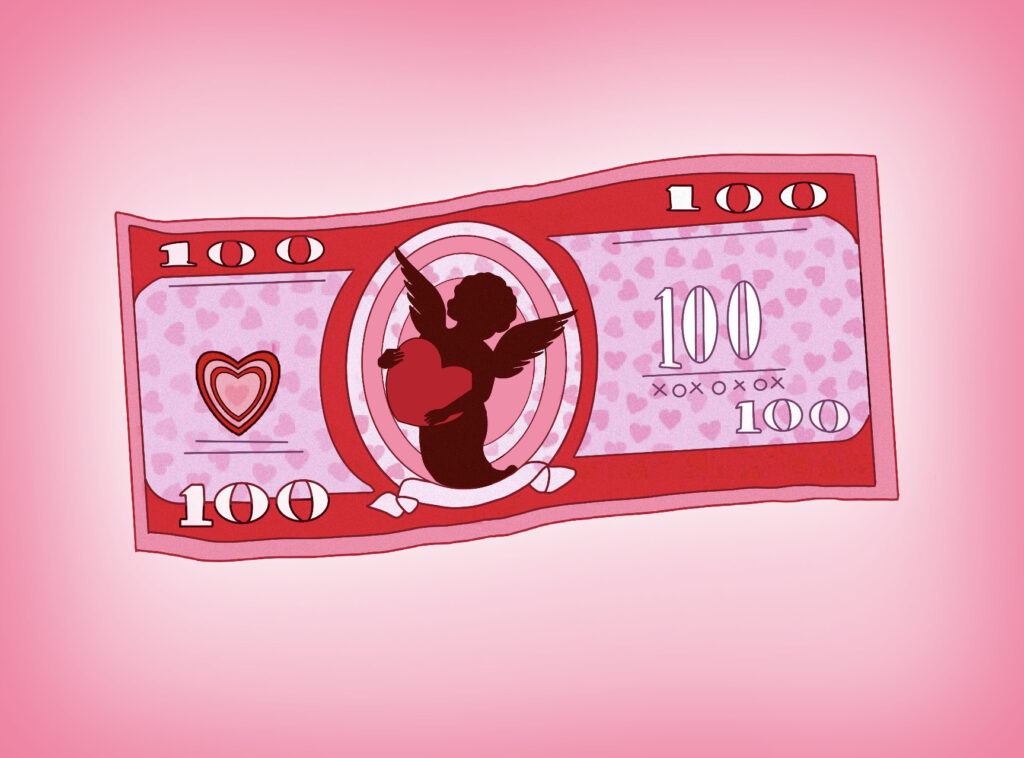In the words of Haddaway, “what is love?” And more importantly, how do we express it? Every February 14, like clockwork, teddy bears cover the store, cheesy 90’s rom-coms flood the TV and Hallmark gets their check. We have been told from the beginning of time that Valentine’s is the epitome of romance, but Valentine’s Day has evolved from a day to spread love to a day to share goods. Which begs us to ask the question, is Valentine’s Day an expression of love, or a product of consumerism? And if so….. does it really matter?
Despite its humble beginnings, Valentine’s Day has developed into a behemoth of American consumption, but, to truly understand just how much this holiday has evolved, we have to take a trip to the past. The exact origin of Valentine’s Day is a mystery, but it is believed to have spawned from Lupercalia, an ancient Roman festival of fertility. Roman men would sacrifice animals and perform gruesome acts in attempts to find their true love. Similarly, another theory is that in Ancient Rome, emperor Claudius banned Roman men from becoming married, as it would hinder their ability to fight in the army. The Patron Saint Valentine vastly opposed this notion and would supposedly officiate marriages in secret, allowing for love to prevail. As century’s passed by, the holiday would remain in the shadow of larger celebrations; that is until the Middle Ages. The writings of Chaucer and Shakespeare would bring Valentine’s Day off the back burner and into the limelight. As a result the holiday would snowball, growing in popularity every year. However, it wasn’t until the 1910’s that the notorious practice of love letters would be popularized, giving birth to the company soon to be known as Hallmark and modern Valentine’s as we know it.
With each year, more and more individuals become ill with love, falling into the trap that is Valentine’s Day. The spending on Valentine’s has come in just shy of Christmas, with Over 52 percent of Americans celebrating annually. The US alone spent over $21.8 billion dollars on teddy bears, candy, cards etc. in 2021, with spending estimates to rise to $23.9 billion by this year. Many may argue that despite all the sendining, it’s all in the interest of love, and it’s true! To go along with that, over six million couples get engaged on Valentine’s Day each year! Then again… over 11 percent of Valentine’s proposals end in divorce.
So what’s the point? I took to the halls of SBHS to ask this very question. Student Mona Lanaoui perfectly encapsulates the true meaning of Valentine’s Day with her opinion that “honestly, I couldn’t care less. As long as I get stuff I am good.” Whether we would like to admit it or not, many of us probably share this same mindset and who can blame us.
“I hate Valentine’s Day, it’s forced expressions of love that seem artificial .[…] It’s a day of people trying, trying for love. If you have to try, no thank you,” says SBHS teacher Alma Guss. This brings up an important topic: is it really expressing love if you need a day to tell you to do so? This supports the idea that Valentine’s has veered off its genuine path, allowing the fakers to masquerade as lovers.
So, is Valentine’s Day an expression of love or a product of consumerism? In a nutshell, yes and yes! Whether you celebrate with passion or have a passion for possessions, Valentine’s Day is whatever you make of it. So before you wallow in your singleness or revel in your love, sit down for a second and think, what does Valentine’s Day mean to you?
- xoxo Ben Purvis
[Image Credit Ben Purvis]





Be First to Comment